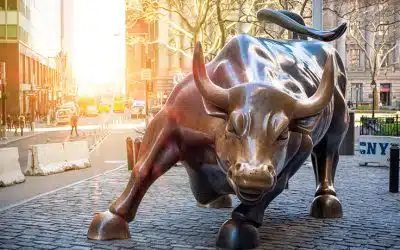“We invest in the best opportunities, even in stocks forgotten by the market”

Redacción Mapfre
Opportunities can arise in the most unexpected corners of the market, in those ignored and forgotten stocks. It could be said that this is the premise on which the analysis of Jonathan Boyar, president of Boyar Value Group, an American research and analysis company founded in 1975, is based. In December 2019, the firm, which counts several of the world’s largest sovereign funds, hedge funds and mutual funds as subscribers to its analysis service, reached an agreement with MAPFRE AM, the insurance Group’s asset management unit, to create a fund based on seeking out the best investment opportunities. The Forgotten Value Fund, as the vehicle is called, is currently enjoying one of its best moments, posting a 20 percent lift in value since the beginning of this year. The fund has consolidated its position as one of the most cutting edge in its category. In the following interview, Boyar analyzes the analytical fundamentals applied in the firm and offers us some insights on the current market situation.
One and a half years after the alliance with MAPFRE AM, what is your assessment and what have been the main projects on which you have worked together?
We could not be more pleased with the partnership. Mapfre is the largest investor in the fund and knowing we have an anchor investor who will judge us by our long-term results allows us the freedom to make investments we believe could be quite profitable in the long run but could be a drag on short-term performance. This is critically important for our investment style as oftentimes we buy businesses that are out of favor, and it might take time before the market recognizes the value that we see.
The relationship is much more than us just helping them manage a fund; collaboration and knowledge sharing are equally important. Mapfre has a fantastic team of investment professionals and it is great to be able to share investment ideas and resources. The partnership is a win-win for both firms in my opinion.
What is the strategy on which MAPFRE US Forgotten Value Fund is based?
The strategy of the fund is to take a private equity approach to stock market investing. We evaluate every company we invest in utilizing the same techniques a private equity investor would use when making an investment. If a company’s stock is selling for a significant discount to what we believe an acquirer would pay for the entire business, we will consider it for an investment. However, a stock being inexpensive is just the first part of the equation. There must be an identifiable catalyst for why the stock will increase in value over “reasonable” period of time. This helps us avoid “value traps”.
How do your team and MAPFRE’s coordinate for joint management in this fund?
The coordination has been terrific. We have regular investment committee meetings where we discuss the Fund as well as the macroeconomic landscape and other relevant investment topics. The team at Boyar also presents the investment case for some of the fund’s holdings to Mapfre. Getting critical feedback from sophisticated investors helps us refine our investment thesis.
In February, the three companies that contributed the most to the portfolio’s growth were Discovery, News Corp and Twitter, the latter contributing 0.64% to the performance. What characteristics do these companies included in the fund have in common? Have there been any recent significant movements?
All three of these companies have identifiable catalysts that we believe will make their stock ascend in value over a “reasonable” period of time. For example, Discovery has the recent launch of Discovery Plus which we find to be very exciting and the company is a potential takeover candidate. Twitter has an activist investor in the stock, and we believe they will do a better job monetizing their user base. The three companies that contributed the most to the portfolio’s performance in April were Angi Inc. (advancing 23.15% and contributing .45% in performance) Levi Strauss & Company (advancing 20.7% and contributing .33% in performance) and Albemarle Corp (advancing 15.1% and contributing .27% in performance).
How does this Forgotten Value fund differ from others in the sector?
The Forgotten Value Fund is quite different from most funds. First, we are not constrained by market capitalization, we invest where we see the best opportunities. The fund has companies with only a few billion dollars in terms of market capitalization and owns companies as large as Berkshire Hathaway and Coca-Cola. We are also sector agnostic. We do not manage the fund to mirror the sector weightings of the S&P 500. We are not afraid to overweight an industry/sector if we have conviction in it and are not afraid to have zero exposure to an industry/sector even if it is a major part of the index. We go where we think there is value, not to try to mimic an index.
We also evaluate companies quite differently than most money managers. The best way to describe our investment style/philosophy would be opportunistic. Some of the companies we have investments in such as Uber, Twitter and Angie are not statistically cheap by traditional valuation metrics but have characteristics that we believe make them more valuable than the current market price gives them credit for. In the case of Uber, Twitter, & Angi we believe the market is not correctly valuing the networks they have built (which would be very hard for a competitor to replicate).
The annually Forgotten Forty report, which points out the Boyar’s top 40 investment ideas, has positioned itself as a leading study of vital lecture for institutional investors. How important is this analysis to the fund?
The Forgotten Forty is part of the research service our research division publishes. Our affiliated research service identifies stocks selling at a significant discount to our estimate of intrinsic value. We publish our research on a subscription basis and our clients include some of the world’s largest asset managers, hedge funds and sovereign wealth funds. By having to continuously generate investment ideas for such a sophisticated audience ensures that we are always on the hunt for investment ideas, instead of recycling a limited universe of names into and out of the portfolio. In addition, obtaining critical feedback from some of the world’s best investors who are not shy in giving us their opinion makes us better investors. All of this directly benefits the fund.
With good figures during the last few months, and after having recovered from its bad numbers of the first wave. What are the projections of this fund through this year? And what is the MAPFRE US Forgotten Value’s long-term objective?
In the short term how we will perform is anyone’s guess. But there are preliminary signs that our style of investing is coming back in vogue. What is the most important thing is how the fund will do over the long term, and we believe our type of opportunistic investing will handsomely reward long-term patient investors.



